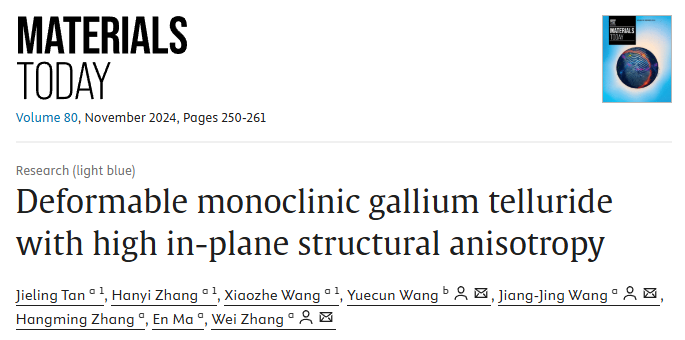
Mechanical deformability becomes a new facet of van der Waals (vdW) semiconductors, which opens up a new avenue to develop flexible and wearable electronics. The screening for deformable semiconductors is so far limited to high-symmetric crystalline structures. Here, we extend the realm towards low-symmetric semiconductors with in-plane anisotropy. We focus on gallium telluride, which is comprised of highly distorted quadruple-layer slabs and zigzag-shaped vdW gaps. By carrying out continuous rolling experiments, we prove that gallium telluride exhibits excellent deformability with high fracture resistance. The plastic deformation in this monoclinic crystal is mediated by both inter-layer slips and cross-layer slips, where the non-negligible interactions between Te atoms across vdW gaps play a major role. The structural integrity of the distorted quadruple-layer slabs is sustained by short and strong covalent bonds, and the key ingredient to keep the high in-plane anisotropy is the robust horizontal homopolar Ga–Ga bonds. In severely deformed samples, amorphization and the formation of micro-cracks help release the internal stresses. The formation of amorphous GaTe could help prevent catastrophic failures of crack coalescence and development. Our work paves the way for integration of deformable and flexible devices with anisotropic functionalities.
Link:Deformable monoclinic gallium telluride with high in-plane structural anisotropy - ScienceDirect